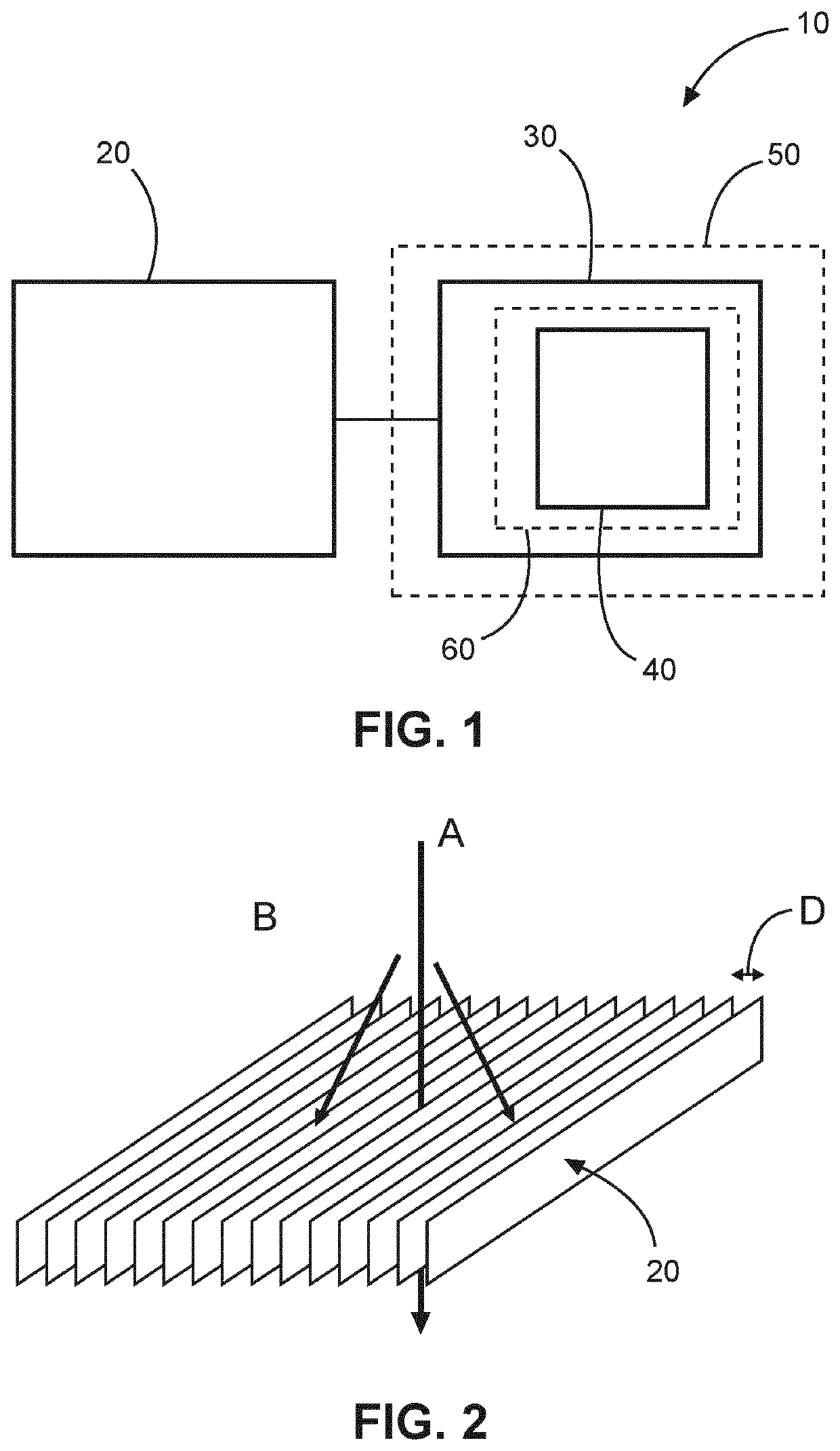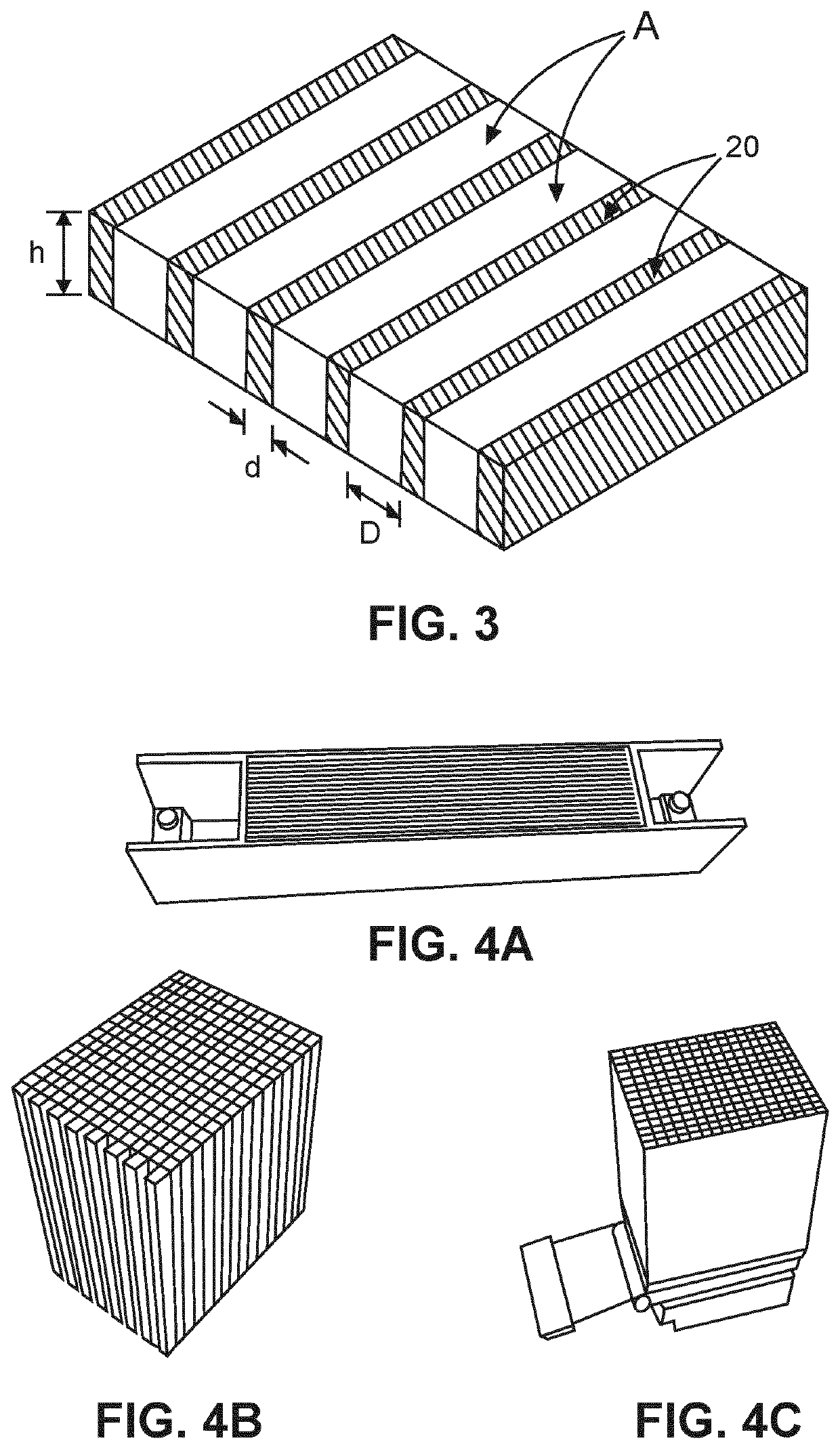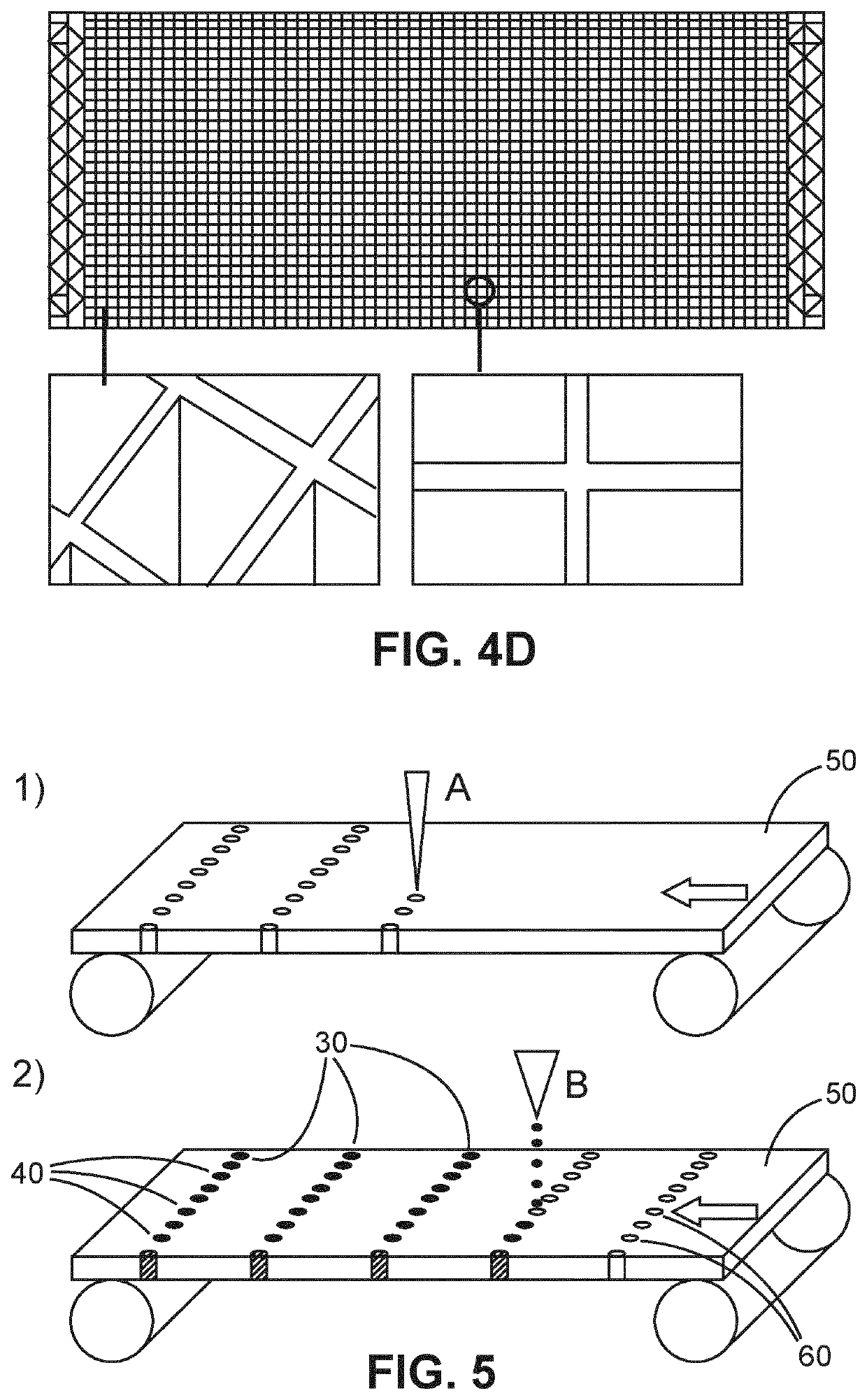X-ray anti scatter grid
a grid and anti-scatter technology, applied in the field of x-ray anti-scatter grid, can solve the problems of reducing the contrast and contrast-to-noise ratio (cnr) of the image, affecting the anti-scatter performance, and affecting the image quality
- Summary
- Abstract
- Description
- Claims
- Application Information
AI Technical Summary
Benefits of technology
Problems solved by technology
Method used
Image
Examples
Embodiment Construction
[0047]FIG. 1 shows an example of an X-ray anti-scatter grid 10, where essential features are shown in solid lines and optional features are shown in dashed lines. The X-ray anti-scatter grid is a 2D anti-scatter grid and comprises a plurality of primary septa walls 20, and a plurality of secondary septa walls 30. The plurality of primary septa walls comprise an X-ray absorbing material. The plurality of primary septa walls are substantially parallel to one another. The plurality of secondary septa walls are located between adjacent pairs of walls of the plurality of primary septa walls such that each secondary septa wall is located between an adjacent pair of walls of the plurality of primary septa walls. Each secondary septa wall of the plurality of secondary septa walls is formed from a plurality of columnar structures 40 extending between the plurality of primary septa walls. The plurality of columnar structures comprise an X-ray absorbing material.
[0048]In an example, the primar...
PUM
 Login to View More
Login to View More Abstract
Description
Claims
Application Information
 Login to View More
Login to View More - R&D
- Intellectual Property
- Life Sciences
- Materials
- Tech Scout
- Unparalleled Data Quality
- Higher Quality Content
- 60% Fewer Hallucinations
Browse by: Latest US Patents, China's latest patents, Technical Efficacy Thesaurus, Application Domain, Technology Topic, Popular Technical Reports.
© 2025 PatSnap. All rights reserved.Legal|Privacy policy|Modern Slavery Act Transparency Statement|Sitemap|About US| Contact US: help@patsnap.com



